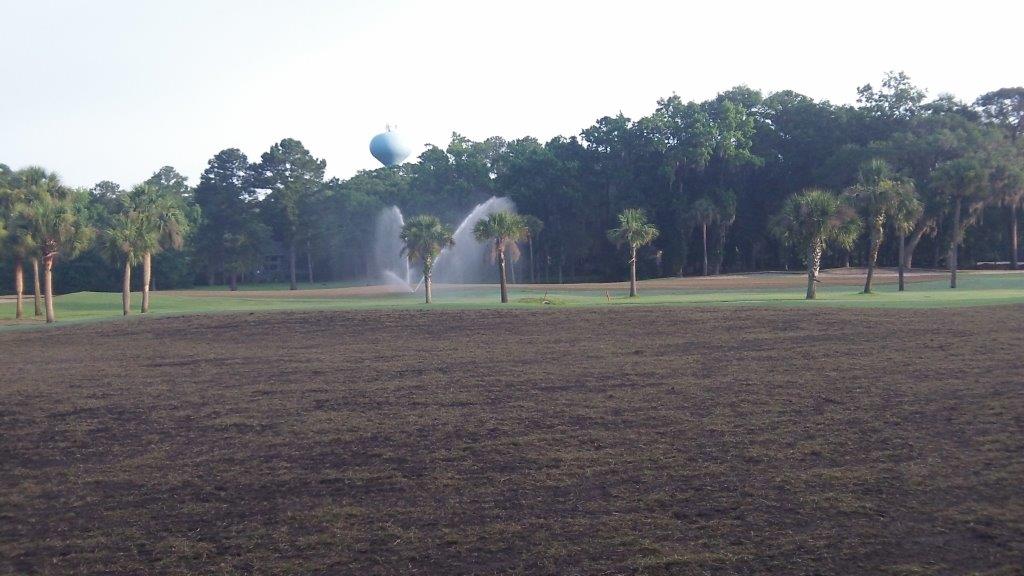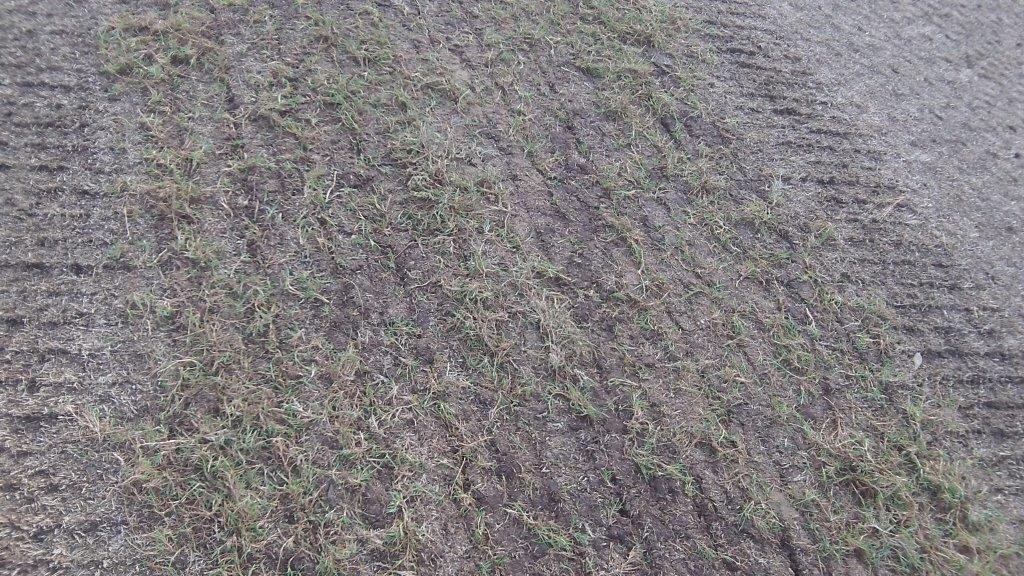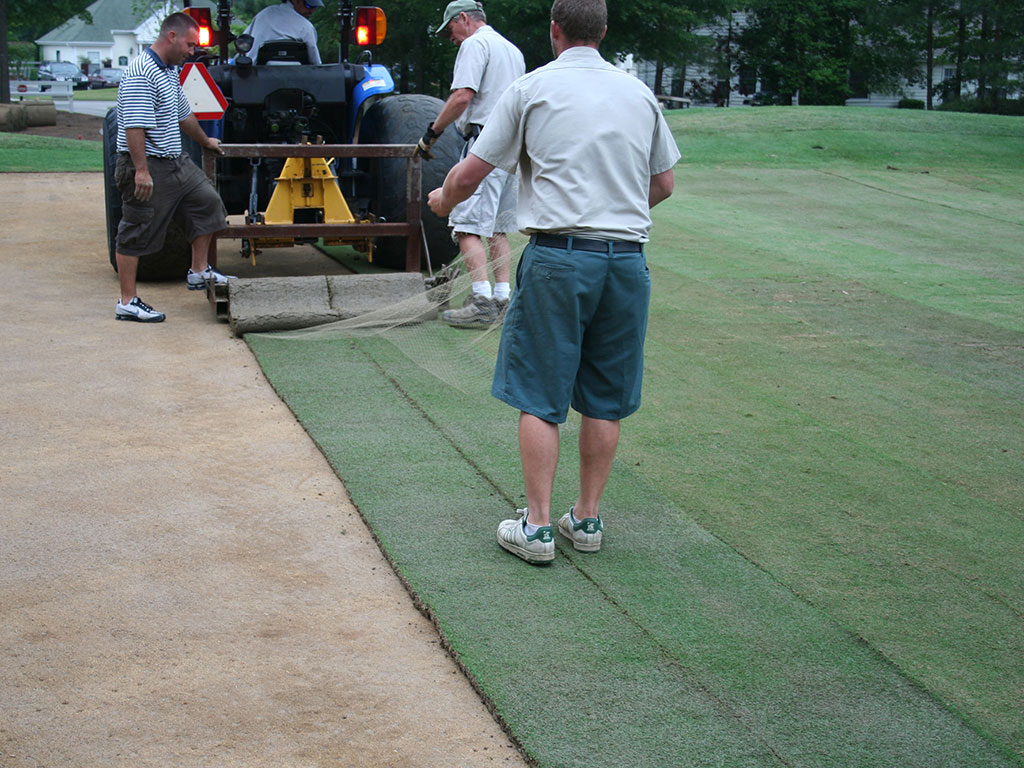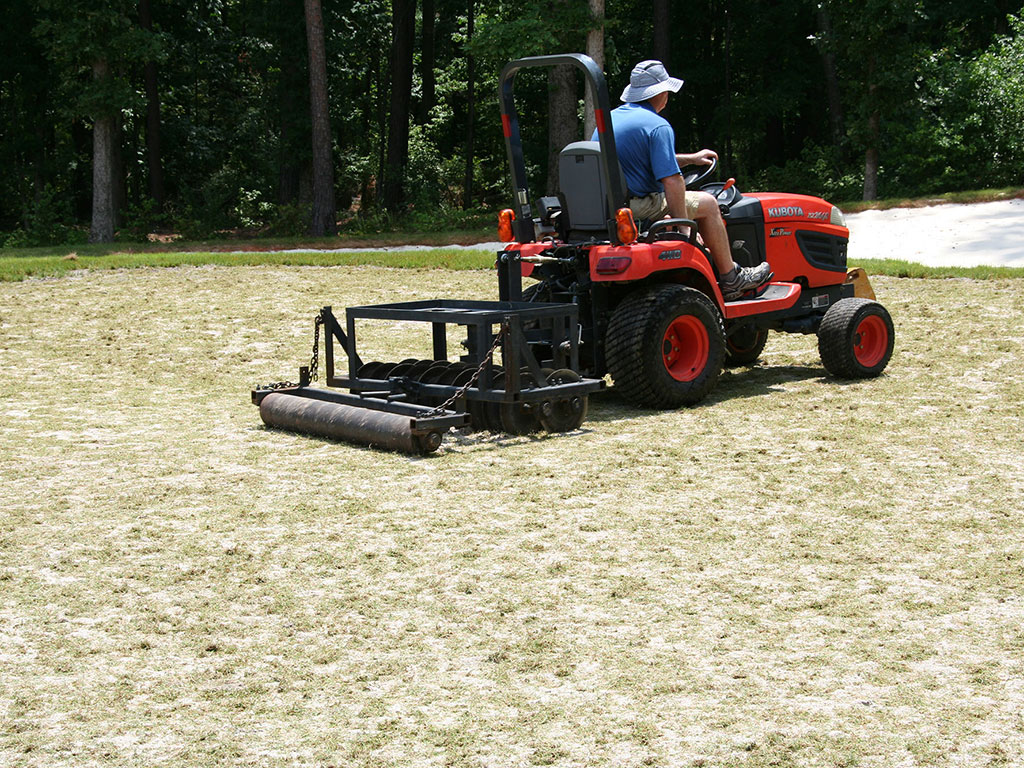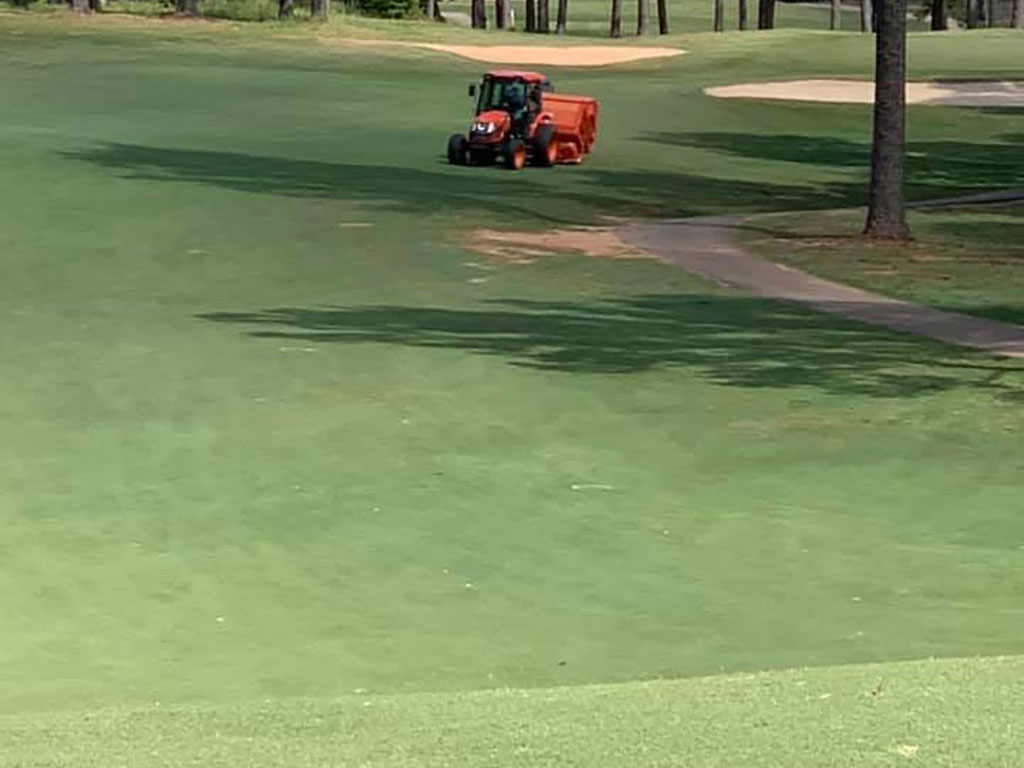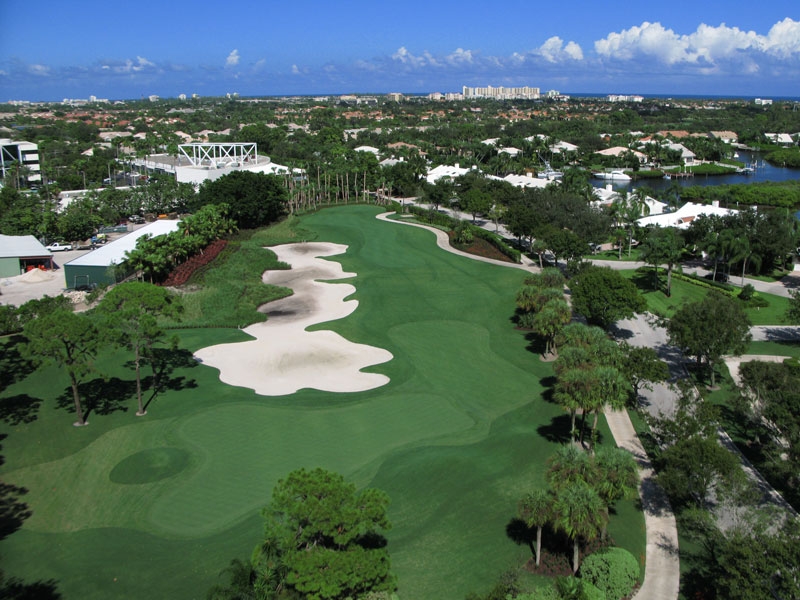Originally developed as a method of planting ultradwarf bermudagrass into old bent putting surfaces, Modern Turf has adapted the No-Till process to be a cost-effective procedure for replanting fairways and roughs. We can guide you through the process from eradicating the old grass to planting new and improved varieties. Our goal is to get you back up and running as quickly as possible at a reasonable price.
Although MiniVerde and Sunday don’t rely as much on the high organic sprig bed of the no-till process (like shallow-rooting ultradwarfs’ do) they do thrive in these growing conditions. We know because it has been extremely successful dating back to our first no-till conversion over 10 years ago. Modern Turf has created and perfected this process for MiniVerde and will happily work with each golf course to ensure its continued success.
No-Till Conversion Process
Course of Events & Time Frame to Transition from Bent to MiniVerde
The “no-till” process is simply killing the existing turf and planting a new grass into the greens without removing significant portions of existing putting surfaces. Below is a detailed description of how the process works. Each facility is a bit different, so we’ll often modify the process for that particular facility.
- Soil test, Nematode Assay and Water test: All this information will be necessary to ensure a successful and swift renovation.
- Kill all existing turf: This refers to all living grasses present in the greens. It will sometimes take several applications of Round-up and fusillade combined to eliminate the existing turf. Remember, fusillade is active in the soil for 10 – 14 days. This would also be the time to begin killing any turf to be removed if you plan to reclaim original putting surface areas. This grass should be killed, do not attempt to harvest it and re use. It is essential to kill it if you are not fumigating. Once it is removed there will be no time to re-grow it in order to kill it.
- Conduct irrigation assay: Begin the process of checking all your irrigation heads to be certain they are level, well-adjusted and in good working order. Repair any leaks anywhere near a green and check nozzles for proper distribution. This is vital to a quick start in the establishment process.
- Scalp greens: This may not be necessary if there is no real turf left.
- Verticut several directions: This process is usually done with traditional verticutters. If an excessively “gooey” layer of thatch is present in the top one to two inches of profile it will be necessary to get a bit more aggressive. In these cases Gradens or the SISIS dethatchers will work better. Some thatch is good but if the top layer is rather thick and dense, preparation would include some additional “opening up’ and “thinning out” to accompany the traditional “no-till” planting process.
- Reclaim original putting surface areas: Many of the greens have shrunk in size over the years and should be reclaimed at this time. This process can be done with soil probes gradually going out from the current edges into the fringes to determine the original contours. Depending on the size of staff versus the amount of greens surface that needs replacing this may be an undertaking to sub out. The process involves using a sod cutter to cut out the now dead turf, remove it, replace it with compatible greens mix and pack it well. We suggested using aerification cores combined with a heavier greens mix to fill the areas being cut out. This will help make the profile in these areas more compatible with the existing greens profile. Fill, pack, water, pack, fill, float, water… Now is the time to lower the lips on any fringes that may cause or be causing dams to occur. Like bentgrass, ultradwarf putting greens rely heavily on surface drainage. There will be a lot of water poured over the greens in the next month so now is the time to address this common condition.
- Aerify putting surfaces: Using the largest tines available with a tight spacing, (or whichever set up you have access to that yields the largest possible surface removal) core aerate the now dead greens and remove cores. If you plan to fumigate it will be the next step.
- Fumigation: Fumigation is highly recommended. The only time it is acceptable to skip the fumigation process is when there are no nematodes and the existing greens were pure bentgrass and void of bermudagrass contamination. Even then we still like to see the process done. In the absence of methyl bromide fumigation Basamid has become the preferred fumigant. Consult labels for proper application requirements.
- Topdress heavily: Using an 80/20 topdressing or straight sand if the greens are slow to drain and heavy, fill in all aerification holes, drag and irrigate. Topdress and water in again to be sure and leave a minimum of ¼” of new sand/mix on top of the existing surface. It may take several topdressings to achieve the right depth, so we suggest 4 to 5 directions with the topdresser before you drag it in.
- Water greens: Run some regular irrigation cycles for a few nights prior to planting to keep moisture levels up.
- Apply preplant fertilizer: Based on soil test results we will provide one tailor-made for your site.
- Sprig: After sprigging the prescribed grow-in process would be followed.
The traditional no-till prep is often done in house in a matter of days. Once our sprigs hit the ground you can expect full coverage in 4-5 weeks and a puttable surface in 6-7 weeks depending on weather, irrigation and fertilization. The time frame for the reclaiming process including the removal of old fringes and replacement of greens mix could take several working days depending on the area undertaken and how many men are put on the job.

